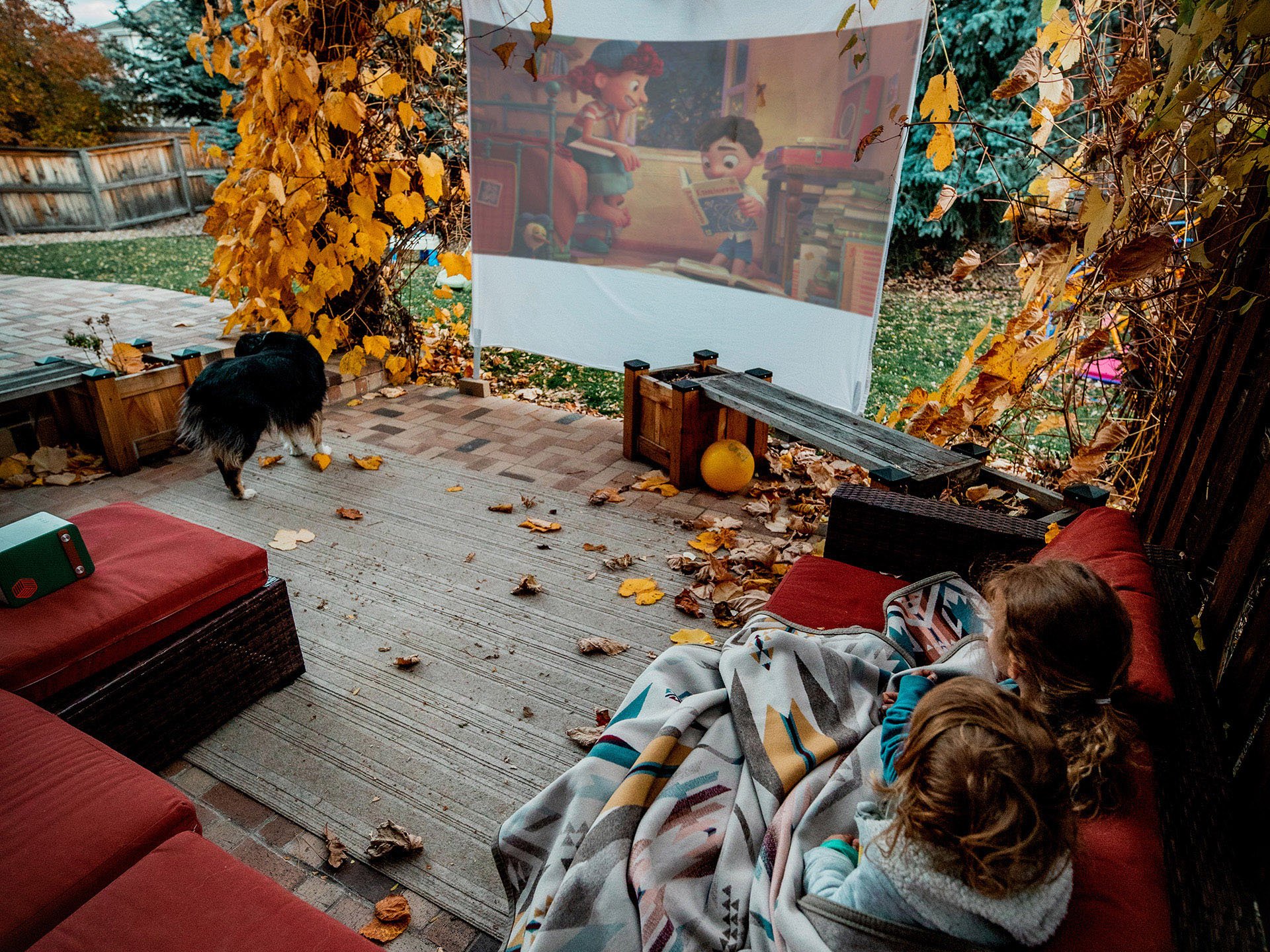Projectors
Monitors
Lighting
Interactive Displays & Signage
Remote Work & Learning
Explore Docks and Hubs
USB-C Hybrid DockEver find yourself pondering the all-important question of what makes a projector good for use outside during the day? Not just when it’s nice and overcast, but rather when the sun’s out in full force. We have the answers you’ve been seeking for so long, and are ready to reveal the secret to enjoying movies, TV, and even gaming on a big screen, in daytime.
There’s this persistent myth that projectors are only good in dark and musty home cinema rooms or at night when camping under the stars. That’s not entirely true. Sure, dark environments are better, but there’s no reason to deprive yourself of enjoyment during the day with your projector. The key is illumination power and viewing conditions!

The key factor in choosing a projector for daytime use is projector brightness, measured in lumens. As a general rule, the more lumens your projector has, the brighter the projected image will be.
Lumens measure visible light for a light source. Total light is measured in lux. A sunny day drenches us in almost 100,000 lux. So, we can’t seriously claim that projectors can outdo the sun. Depending on your projection size, to outdo natural sunlight you will need hundreds of thousands of lumens. Such projectors simply do not exist.
| Condition | Illumination (lux) |
|---|---|
Condition Sunlight | Illumination (lux) 107,527 |
Condition Full Daylight | Illumination (lux) 10,752 |
Condition Overcast Day | Illumination (lux) 1,075 |
Condition Very Dark Day | Illumination (lux) 107 |
Condition Twilight | Illumination (lux) 10.8 |
Condition Deep Twilight | Illumination (lux) 1.08 |
Condition Full Moon | Illumination (lux) 0.108 |
Condition Quarter Moon | Illumination (lux) 0.0108 |
Condition Starlight | Illumination (lux) 0.0011 |
Condition Overcast Night | Illumination (lux) 0.0001 |
Table Source: www.TheEngineer ToolBox.com
Now, an average bright day measures roughly 6000-10,000 lumens as perceived by humans, and that’s a tough number to match for most entertainment-focused projectors. But not impossible, thanks to the relativity of viewing conditions.
To project during full daylight outside you need more lumens, and we mean a lot more. Sure, professional projectors deliver up to 10,000 lumens, but they’re hardly portable or affordable since they are primarily designed for large venues like expos and conventions, not afternoon movie sessions for the family.
What you need is a capable projector that you’ll be able to easily carry and set up nearly anywhere, but one that has at least 50% parity with a bright day. So, 3000 lumens can be a good starting point for locations with plenty of shade. But 4000 or 5000 lumens will be even better, although these projectors are also quite expensive.
However, most portable projectors currently have lower lumens. It's recommended to opt for a portable projector with 1,000 lumens, ideal for creating your outdoor theater anytime.
When searching for the perfect portable projector for outdoor movies or gaming, there are several factors beyond just brightness to consider. It's essential to opt for a compact design with a convenient handle or an accessory kit for flexible storage. Additionally, an LED light source ensures vivid colors and clear images, while a built-in long-lasting battery allows for uninterrupted movie marathons or gaming sessions. These projectors offer versatile connectivity options, making it easy to access content from various sources. Moreover, equipped with a built-in 2.1-channel audio system, they double as wireless speakers, delivering high-quality sound for music enthusiasts anytime, anywhere.
Time matters too. If you think 11am-2pm are great for movies you’ll need more illumination or settle for not getting the full picture. We recommend later hours when solar power begins to diminish. If you can’t do nighttime, better the hours just before sunset. Or early morning. It’s tempting to do a lunchtime projection session, but it’ll be more of a challenge for sure.
Locations with more shade to block direct sunlight are great. If you insist on setting up in the middle of a huge parking lot, your experience won’t be as good as in the middle of a wooded section of parkland where trees help redirect much of the sunlight. Alternatively, you can think of putting together a shed or use other readily available items like umbrellas to create some shade.
Importantly, choose your screen carefully. Slightly off-white screens that aren’t glossy offer the best experience, though an overly matte screen will diffuse light too much and compromise image clarity. Avoid dark-colored screens, as those “soak up” light. The most popular options for outdoor viewing are inflatable screens, which often feature just the right combination of screen color and texture.
Enjoying big screen entertainment outside during daytime can be tricky. But it’s possible for sure with careful consideration of your projector, location, and viewing time. And if that’s not your thing, you can always set up a dark and musty home cinema room!
{{title}}
We will notify you when the product becomes available
{{notifyMeNote}}
We will send you an email once the product become available . Your email will not be shared with anyone else
Sorry, our store is currently down for maintenance.We should be back shortly. Thank you for your patience!
The requested qty is not available
The requested qty exceeds the maximum qty allowed in shopping cart
Product that you are trying to add is not available.